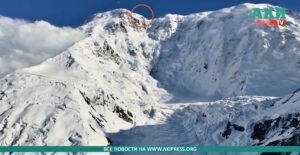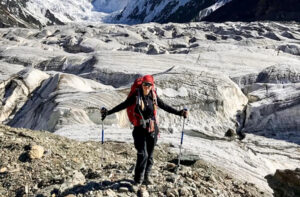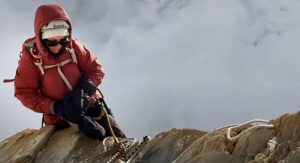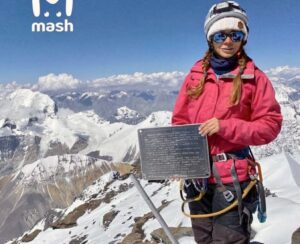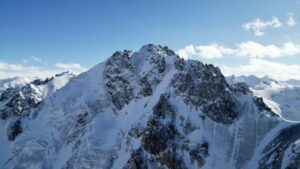The race to save Russian climber Natalia Nagovitsyna, stranded at 7,150m on Kyrgyzstan’s 7,439m Pobeda Peak with a broken leg, grows desperate.
For nine days, the 47-year-old Moscow climber has endured subzero temperatures. She is running or has run out of food, water, and fuel, and is lying in a torn tent in a sleeping bag in one of the world’s deadliest high-altitude environments. She has no communication device.
A four-person rescue team, dispatched by Kyrgyzstan’s Ministry of Defense on August 20, reached Camp 2 yesterday and 5,800m today, according to Anna Piunova of Mountain.ru. Tomorrow, weather permitting, they will continue up to 6,400m.
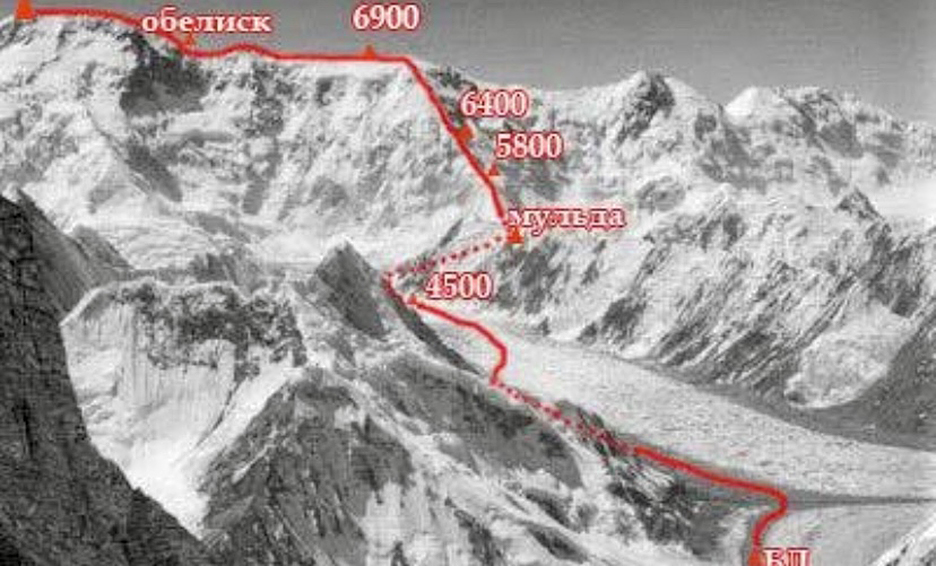
The route that the rescuers are currently ascending. Photo: Anna Piunova/Mountain.ru
Increasing pessimism
The Russian Mountaineering Federation issued stark warnings today about the slim odds that Nagovitsyna can survive. Vice-President Alexander Pyatnitsyn said, “It will be almost impossible to save her,” he said. “There’s a three-kilometer-long ridge, and it takes at least 30 people in such a situation to rescue a person from there.”
Elena Laletina from RussianClimb echoed the same thoughts to ExplorersWeb: that four or even eight rescuers aren’t enough to carry out such a difficult rescue, where Nagovitsyna is immobilized and can’t assist.
Alexander Yakovenko of the Russian Mountaineering Federation told Izvestia, “Today, four people are trying to get there. There’s an avalanche hazard, a big challenge. There is a small chance they will make it. But that means three, four, maybe five more days.”
Yakovenko added that the rescuers themselves risk being caught in an avalanche, underscoring the perilous conditions on the mountain. Yakovenko even went so far as to describe the situation as “hopeless.”
“If she’s alive, I’ll believe in a miracle,” he told Pravda Greece. “If she is saved, then I will believe in a miracle twice over.”
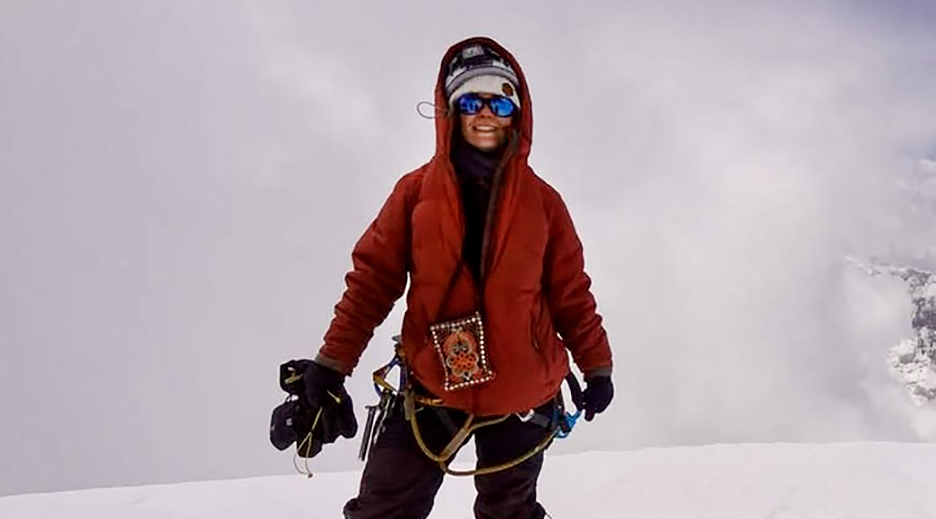
Natalia Nagovitsyna. Photo: Izvestia
A long way
One of the closest starting points for climbing Pobeda Peak is the South Inylchek camp, located 3.5 vertical kilometers below. The distance between base camp and the summit is an astonishing 12km.
The process is further complicated by unfavorable weather, and the terrain where the Russian woman is stranded makes it difficult to bring her down. Her tent lies in the same spot where climber Mikhail Ishutin died 10 years ago. His body has still not been retrieved. Even in ideal weather, specialists would need at least two days to bring the stranded woman down.
To ascend Pobeda from Base Camp to summit usually takes 5-10 days, or 5-7 days for experienced, well-acclimatized climbers, if the weather is not bad. The descent typically takes 2-4 days. Since Nagovitsyna is at around 7,150m, rescuers could reach her before the weekend.
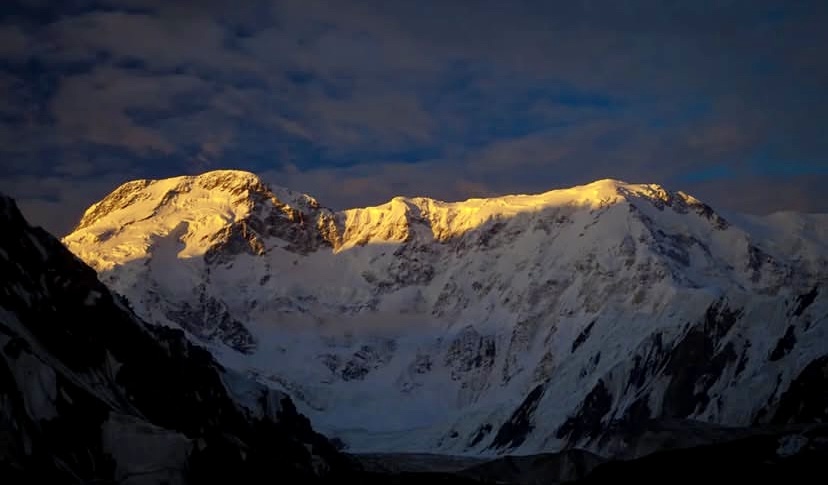
Pobeda Peak. Photo: Misha Makovkin
Nagovitsyna came to Pobeda, also known as Jengish Chokusu, to pursue the Snow Leopard title. This old honor is bestowed on those who’ve climbed all five 7,000m peaks in the former USSR. By reputation, Pobeda is the hardest, and it marked her fifth summit. But on her way down on August 12, she slipped and fractured her leg. Her climbing partner, Roman, provided first aid, secured her in a tent, then descended to base camp to seek help.
On August 13, Italian climber Luca Sinigaglia and a German mountaineer named Gunther (no last name provided) reached her, delivering a sleeping bag, stove, and gas canister — supplies critical for her survival. Tragically, on August 16, Sinigaglia died on his way down. His body is now resting in a cave at 6,900m. Gunther, exhausted and battling worsening weather, also retreated, unable to carry Nagovitsyna by himself across the treacherous terrain.

At almost 7,000m, Alexandr Moroz traverses the ridge from Vazha Pshavela to Obelisk (Camp 6) on Pobeda in 2024. Frame of a video by Alexandr Moroz/Instagram
Complicated rescue
The three-kilometer-long ridge at 7,000–7,400m on Pobeda demands fixed ropes, anchors, and a stretcher to carry an immobilized climber. This, in turn, requires multiple climbers to rotate duties and manage fatigue. The thin air, -20°C temperatures, and strong winds exacerbate exhaustion and altitude risks. Meanwhile, a large team is needed to share the heavy gear — ropes, medical supplies, food, and gas. Safety backups are critical, as avalanches or injured rescuers could derail the mission. The four-person team, described as insufficient by experts, faces a near-impossible task, with progress slowed by snowstorms and poor visibility.
Pobeda Peak’s reputation as the deadliest 7,000m peak in the former USSR is well-earned, with at least 70 recorded deaths. No injured climber has ever been evacuated from as high an altitude as Nagovitsyna’s on this mountain.
On August 16, a Russian Ministry of Defense Mi-8 helicopter crashed at 4,600m, injuring the pilot and a rescuer, while a second attempt failed due to zero visibility. On August 19–20, helicopters evacuated 62 climbers, tourists, and rescuers, including the body of Russian climber Alexey Yermakov, who died near Khan Tengri. Nagovitsyna’s extreme altitude and immobility forced them to concentrate on more accessible parties in distress.
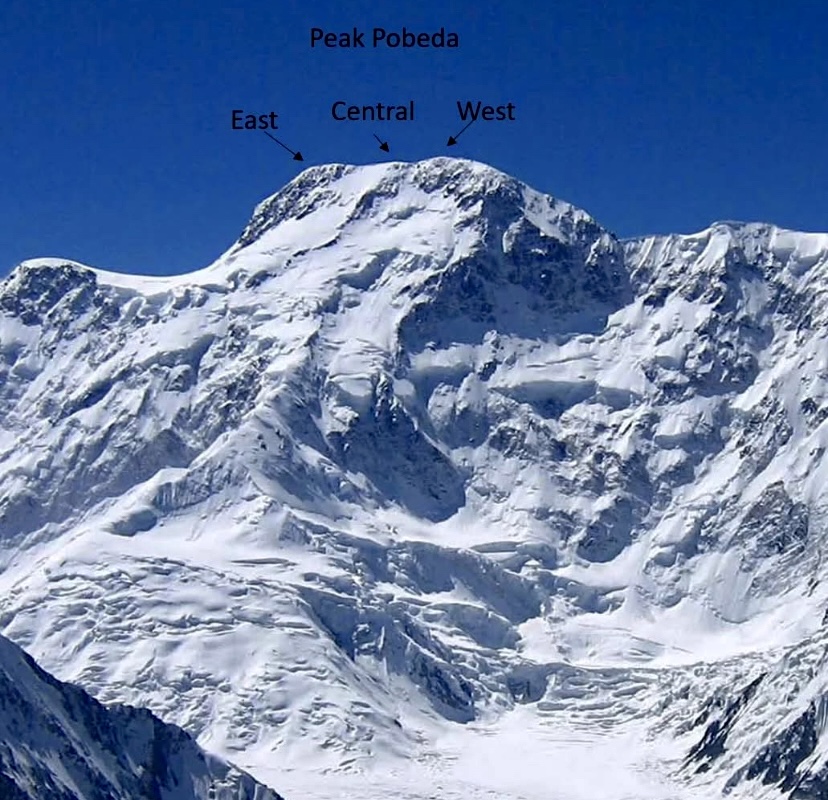
Pobeda Peak. Photo: Eric Gilbertson / Facebook
No news on Nagovitsyna
A drone flyover on August 19 confirmed she was alive, but unconfirmed reports on August 20-21 suggested that Nagovitsyna is no longer showing signs of life.
However, according to Kyrgyzstan’s Emergency Situations Ministry, quoted by Pravda, no one can confirm Nagovitsyna’s current status until rescuers reach her, which is estimated to be August 24-25.
Nagovitsyna’s chances of surviving beyond 10–12 days are slim due to extreme cold, thirst, and thin air. Nevertheless, rescuers continue to race to her, battling harsh weather and treacherous terrain in the faint hope of saving her life.
Nagovitsyna’s son and her sister, in particular, cling to hope.
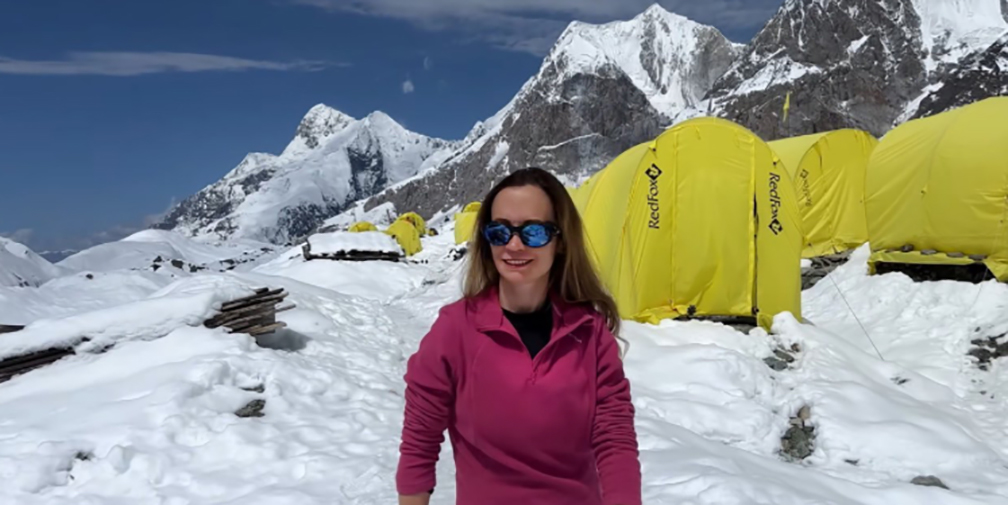
Natalia Nagovitsyna. Photo: Dmitry Sinitsyn via Orda.kz

